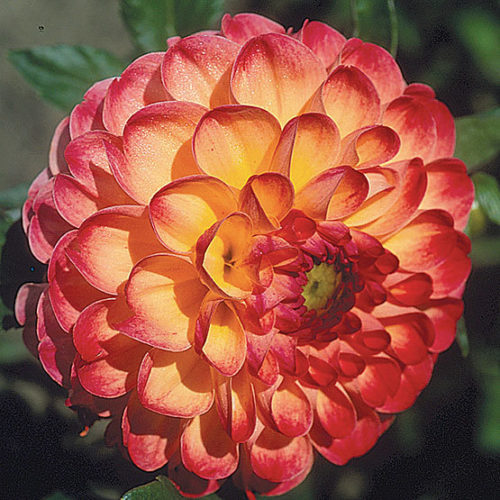
Of the maybe 10,000 named dahlias introduced in the 1800s—when dahlias ranked right up there with roses in popularity—only three survive. One of them is 'Kaiser Wilhelm', introduced in 1892. Its 3-inch flowers have neatly curled petals of soft custard-yellow brushed with burgundy, and a green button eye just like that of an old rose. The plant can grow to 5 feet.
Noteworthy CharacteristicsThis is a tall heirloom dahlia.
CarePlant in well-drained, humus-rich soil in full sun. Fertilize weekly during growth. May need staking. Pinch, remove brandhes and buds, and deadhead to produce a lengthier flower display. Lift tubers in fall and store in a well-ventilated, frost-free location. Dahlias thrive in cool, moist climates.
PropagationTake basal shoot cuttings and root under plastic or a mist tent, with bottom heat, or divide clumps into two or more pieces, each with a shoot, and plant out after frost has passed.
ProblemsAphids, stem borers, spider mites, caterpillars, earwigs, cucumber beetles, capsid bugs, flower thrips, planthoppers, slugs. Powdery mildew, impatiens necrotic spot, dahlia mosaic viruses, smut, fungal leaf spots, soft rot, crown gall, blossom blights (especially gray mold), and tomato spotted wilt virus.
- Genus : Dahlia
- Plant Width : 1 to 3 feet
- Zones : 10, 11, 9
- Plant Height : 3 to 6 feet
- Uses : Containers
- Bloom Time : Early Fall, Fall, Late Summer, Summer
- Light : Full Sun
- Flower Color : Green, Red, Yellow
- Maintenance : High
- Moisture : Medium Moisture
- Growth Rate : Moderate
- Plant Type : Perennials
- Plant Seasonal Interest : Summer Interest



























